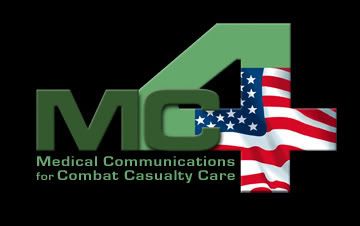MC4 Systems Administrator Jorge Guzman describes his experiences collecting medical data with the old paper-based system as an Army medic and and how different the process has become with MC4.
----------------------------------------------
During my 20 years in the Army as a medic, I always complained that there should be a better way to capture patient documentation in combat and field
 environments. We always used SF600s – Chronological Record of Medical Care – or the DD Form 1380 – field medical card. Both forms very rarely made it to the patient records – including my own records from Operation Desert Storm.
environments. We always used SF600s – Chronological Record of Medical Care – or the DD Form 1380 – field medical card. Both forms very rarely made it to the patient records – including my own records from Operation Desert Storm.Then along comes MC4 with its CHCS II-T and BMIST-J. "No!! Change!! I don't like change!! Nobody likes change!!"
There is an old saying, “If it ain’t broke, don’t fix it.” Well, the old system really was broken and needed to be fixed.
I’ve been training units around the world on the MC4 applications since 2003.
 First it was just theory. Then I had the opportunity to see it in action. First in Kuwait, then Iraq. In its infancy CHCS II-T wasn’t welcomed. It was a change.
First it was just theory. Then I had the opportunity to see it in action. First in Kuwait, then Iraq. In its infancy CHCS II-T wasn’t welcomed. It was a change.By 2005, CHCS II-T was being used by most of the medical units in Iraq and all of the units in Kuwait.
In 2005, I became ill in Kuwait. I woke up dizzy one day. I couldn’t even stand up. Lucky for me, the Arifjan clinic was close by. I was seen by a provider from the Navy and my care was documented on an MC4 system using
The check-in process was very smooth. The clerk asked for my CAC and an MC4-provided scanner was used. He quickly entered my demographic information, name, SSN, gender, DOB, as well as all of the information needed to create an electronic medical record.
I was told to have a seat and would be seen in a short time. Before I could sit, the medic called me for a screening. In the screening room, the medic pulled up my encounter in the MC4 computer and entered my vital signs, added any allergies and other medical information the physicians may need to know.
I asked the medic how he felt using the

Once the medic completed the initial screening, he took me to a chair outside of the provider’s exam room where I waited to be seen by the provider. The facility was very busy that day. I waited about 10 minutes until a Navy physician's assistant called me into the room.
My provider documented all her findings and tests in
Upon my return to the Arifjan clinic, I was seen by another provider, a neuron specialist, and she was able to read the care that the first provider conducted. Although she couldn’t see my encounter from Camp Doha on the local
I was examined a few more times in Kuwait during follow-up visits and received excellent care each time. My last provider in Kuwait gave me all my encounters in paper format so that I could receive follow-up treatments when I returned to San Antonio.
When I returned home from Kuwait,
 I made an appointment with my primary provider at Brooke Army Medical Center (BAMC), Texas. Like a good patient, I followed my instructions and took all my paper encounter documentation with me in case the provider had any questions. BAMC uses AHLTA which is very similar to CHCS II-T. I checked in for my appointment and went through the screening process. It was identical to the screening process performed for CHCS II-T in theater.
I made an appointment with my primary provider at Brooke Army Medical Center (BAMC), Texas. Like a good patient, I followed my instructions and took all my paper encounter documentation with me in case the provider had any questions. BAMC uses AHLTA which is very similar to CHCS II-T. I checked in for my appointment and went through the screening process. It was identical to the screening process performed for CHCS II-T in theater.After a short wait, I went in to see my provider with my encounter documentation from Kuwait in hand. As I was talking to the provider, I told her that my care was documented in CHCS II-T while I was in Kuwait. I informed her that if she had access to TMDS, she could see my encounters or I c
 ould give her my paper SF600s. She checked the documents tab in AHLTA and, low and behold, my encounters from Kuwait were in the system. My test results were even entered into the notes.
ould give her my paper SF600s. She checked the documents tab in AHLTA and, low and behold, my encounters from Kuwait were in the system. My test results were even entered into the notes.My provider was very impressed with the capabilities of the MC4 system. She now had all of my documentation and was able to continue the treatment that was started in Kuwait. She commented that with this system, providers are able to provide a better continuity of care then in previous years.
I was confident in the capabilities of the MC4 systems before this experience, but this solidified my belief. I was able to be assessed, diagnosed and treated for my sickness in theater and my medical care was continued without having to start the process all over again. This is a huge leap in the quality of patient documentation and tracking from my experience in 1990 during Desert Storm.
I’m sold.

No comments:
Post a Comment